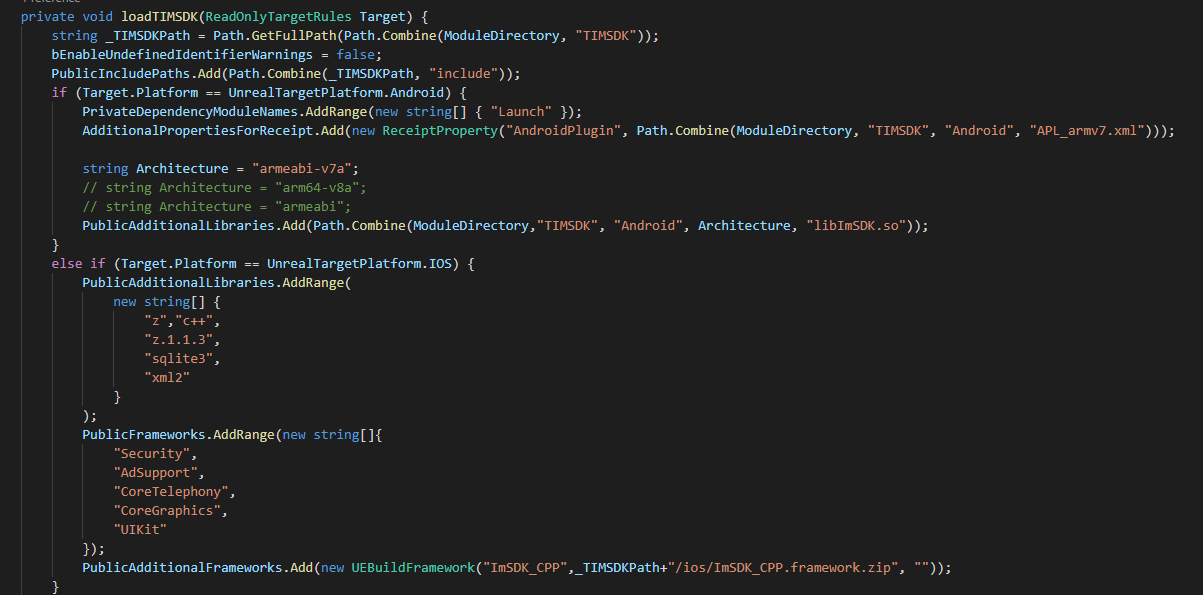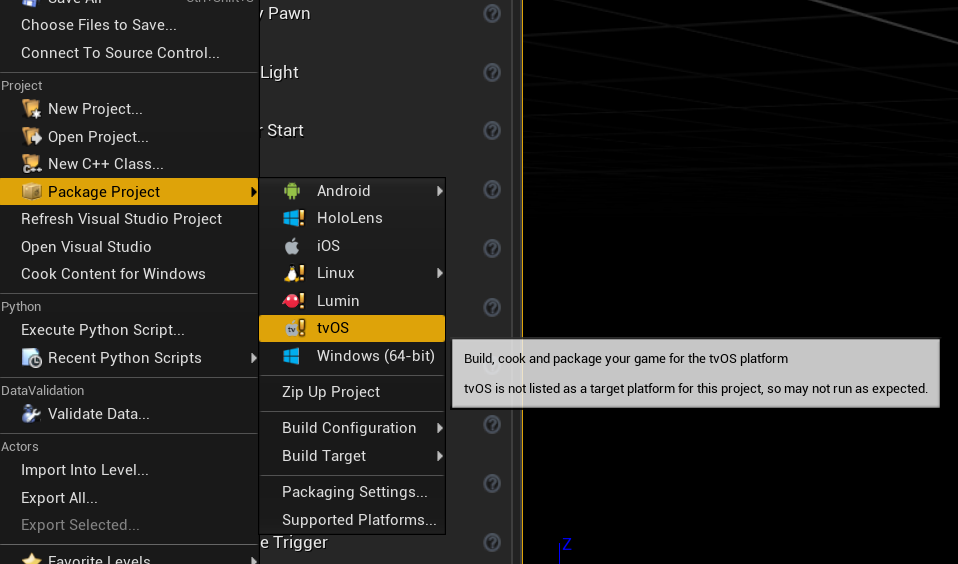- News and Announcements
- Product Introduction
- Purchase Guide
- Free Demos
- Download
- Get Started
- Chat Interaction (UI Included)
- Video Call (UI Included)
- Desk
- Quick Start
- Integration Guide
- Configure Channels
- Admin Operation Manual
- Configure Agent to Proactively Contact Chat Users
- Login to Management End
- Third-party extension
- Agent Management
- Agent Role Permission Management
- Online Status and Reasons for Short Break
- Skill Group Management
- Session Service Flow Management
- Satisfaction Evaluation
- Quick Reply
- Session Routing and Reception Settings
- Agent Operation Manual
- AI Chatbot
- More Practices
- How to intergrate TUIChat independently in Uniapp(Vue2 & Vue3)
- How to intergrate TUIChat independently in Web(Vue2 & Vue3)
- AI Chatbot
- End-to-end encrypted chat with Virgil
- Super Large Entertainment and Collaboration Community
- Live Room Setup Guide
- How to integrate Tencent IM with Salesforce
- How to integrate Tencent IM with Zendesk
- How to integrate chat widget to your Shopify online store
- Discord Implementation Guide
- How to Integrate Chat into Games
- Flutter Avchatroom
- No UI Integration
- SDK Integration
- Initialization
- Login and Logout
- Message
- Message Overview
- Sending Message
- Receiving Message
- Historical Message
- Forwarding Message
- Modifying Message
- Message Inserting
- Deleting Message
- Clearing Messages
- Recalling Message
- Online Message
- Read Receipt
- Querying Message
- Group @ Message
- Targeted Group Message
- Notification Muting
- Message Extension
- Message Reaction
- Message Translation
- Message Pinning
- Conversation
- Group
- Community Topic
- User Profile and Relationship Chain
- Offline Push
- Local Search
- Signaling
- Client APIs
- Server APIs
- Generating UserSig
- RESTful APIs
- RESTful API Overview
- RESTful API List
- Message Related
- Session Related
- Group Related
- User Management
- Global Mute Management
- Operations Management
- Chatbots
- Webhooks
- Webhook Overview
- Webhook Command List
- Online Status Webhooks
- Relationship Chain Webhooks
- One-to-One Message Webhooks
- Group Webhooks
- Before a Group Is Created
- After a Group Is Created
- Before Applying to Join a Group
- Before Inviting a User to a Group
- After a User Joins a Group
- After a User Leaves a Group
- Before Group Message Is Sent
- After a Group Message Is Sent
- After a Group Is Full
- After a Group Is Disbanded
- After Group Profile Is Modified
- Callback After Recalling Group Messages
- Webhook for Online and Offline Status of Audio-Video Group Members
- Webhook for Exceptions When Group Messages Are Sent
- Before a Topic Is Created
- After a Topic Is Created
- After a Topic Is Deleted
- Topic Profile Change Webhook
- Webhook Mutual Authentication Configuration Guide
- Chatbot webhooks
- Console Guide
- FAQs
- Security Compliance Certification
- Chat Policies
- Migration
- Error Codes
- Contact Us
- News and Announcements
- Product Introduction
- Purchase Guide
- Free Demos
- Download
- Get Started
- Chat Interaction (UI Included)
- Video Call (UI Included)
- Desk
- Quick Start
- Integration Guide
- Configure Channels
- Admin Operation Manual
- Configure Agent to Proactively Contact Chat Users
- Login to Management End
- Third-party extension
- Agent Management
- Agent Role Permission Management
- Online Status and Reasons for Short Break
- Skill Group Management
- Session Service Flow Management
- Satisfaction Evaluation
- Quick Reply
- Session Routing and Reception Settings
- Agent Operation Manual
- AI Chatbot
- More Practices
- How to intergrate TUIChat independently in Uniapp(Vue2 & Vue3)
- How to intergrate TUIChat independently in Web(Vue2 & Vue3)
- AI Chatbot
- End-to-end encrypted chat with Virgil
- Super Large Entertainment and Collaboration Community
- Live Room Setup Guide
- How to integrate Tencent IM with Salesforce
- How to integrate Tencent IM with Zendesk
- How to integrate chat widget to your Shopify online store
- Discord Implementation Guide
- How to Integrate Chat into Games
- Flutter Avchatroom
- No UI Integration
- SDK Integration
- Initialization
- Login and Logout
- Message
- Message Overview
- Sending Message
- Receiving Message
- Historical Message
- Forwarding Message
- Modifying Message
- Message Inserting
- Deleting Message
- Clearing Messages
- Recalling Message
- Online Message
- Read Receipt
- Querying Message
- Group @ Message
- Targeted Group Message
- Notification Muting
- Message Extension
- Message Reaction
- Message Translation
- Message Pinning
- Conversation
- Group
- Community Topic
- User Profile and Relationship Chain
- Offline Push
- Local Search
- Signaling
- Client APIs
- Server APIs
- Generating UserSig
- RESTful APIs
- RESTful API Overview
- RESTful API List
- Message Related
- Session Related
- Group Related
- User Management
- Global Mute Management
- Operations Management
- Chatbots
- Webhooks
- Webhook Overview
- Webhook Command List
- Online Status Webhooks
- Relationship Chain Webhooks
- One-to-One Message Webhooks
- Group Webhooks
- Before a Group Is Created
- After a Group Is Created
- Before Applying to Join a Group
- Before Inviting a User to a Group
- After a User Joins a Group
- After a User Leaves a Group
- Before Group Message Is Sent
- After a Group Message Is Sent
- After a Group Is Full
- After a Group Is Disbanded
- After Group Profile Is Modified
- Callback After Recalling Group Messages
- Webhook for Online and Offline Status of Audio-Video Group Members
- Webhook for Exceptions When Group Messages Are Sent
- Before a Topic Is Created
- After a Topic Is Created
- After a Topic Is Deleted
- Topic Profile Change Webhook
- Webhook Mutual Authentication Configuration Guide
- Chatbot webhooks
- Console Guide
- FAQs
- Security Compliance Certification
- Chat Policies
- Migration
- Error Codes
- Contact Us
This document describes how to quickly integrate the Tencent Cloud IM SDK (Unreal Engine) to your projects. To configure and integrate the SDK, follow these steps.
Environment Requirements
Unreal Engine 4.27.1 or later.
Platform | Environment |
Android | Android Studio 4.0 or later. Visual Studio 2017 15.6 or later. A real device for testing. |
iOS & macOS | Xcode 11.0 or later. OSX 10.11 or later. Ensure your project has a valid developer signature. |
Windows | OS: Windows 7 SP1 or later (64-bit based on x86-64). Disk capacity: at least 1.64 GB of space after the IDE and required tools are installed. |
Integrating the SDK
1. Download the SDK and SDK source code.
2. Copy the
IM SDK folder to the Source/[project_name] directory of your project ([project_name] is the name of your project).3. Add the following function to the [project_name].Build.cs file in your project.
// Load the IM underlying libraries of platformsprivate void loadTIMSDK(ReadOnlyTargetRules Target) {string _TIMSDKPath = Path.GetFullPath(Path.Combine(ModuleDirectory, "TIMSDK"));bEnableUndefinedIdentifierWarnings = false;PublicIncludePaths.Add(Path.Combine(_TIMSDKPath, "include"));if (Target.Platform == UnrealTargetPlatform.Android) {PrivateDependencyModuleNames.AddRange(new string[] { "Launch" });AdditionalPropertiesForReceipt.Add(new ReceiptProperty("AndroidPlugin", Path.Combine(ModuleDirectory, "TIMSDK", "Android", "APL_armv7.xml")));string Architecture = "armeabi-v7a";// string Architecture = "arm64-v8a";// string Architecture = "armeabi";PublicAdditionalLibraries.Add(Path.Combine(ModuleDirectory,"TIMSDK", "Android", Architecture, "libImSDK.so"));}else if (Target.Platform == UnrealTargetPlatform.IOS) {PublicAdditionalLibraries.AddRange(new string[] {"z","c++","z.1.1.3","sqlite3","xml2"});PublicFrameworks.AddRange(new string[]{"Security","AdSupport","CoreTelephony","CoreGraphics","UIKit"});PublicAdditionalFrameworks.Add(new UEBuildFramework("ImSDK_CPP",_TIMSDKPath+"/ios/ImSDK_CPP.framework.zip", ""));}else if(Target.Platform == UnrealTargetPlatform.Mac) {PublicAdditionalLibraries.AddRange(new string[] {"resolv","z","c++","bz2","sqlite3",});PublicFrameworks.AddRange(new string[] {"AppKit","Security","CFNetwork","SystemConfiguration",});PublicFrameworks.Add(Path.Combine(_TIMSDKPath, "Mac", "Release","ImSDKForMac_CPP.framework"));}else if (Target.Platform == UnrealTargetPlatform.Win64) {PublicAdditionalLibraries.Add(Path.Combine(_TIMSDKPath, "win64", "Release","ImSDK.lib"));PublicDelayLoadDLLs.Add(Path.Combine(_TIMSDKPath, "win64", "Release", "ImSDK.dll"));RuntimeDependencies.Add("$(BinaryOutputDir)/ImSDK.dll", Path.Combine(_TIMSDKPath, "win64", "Release", "ImSDK.dll"));}}
4. Call the function in the [project_name].Build.cs file:


5. You have successfully integrated the IM SDK. You can use IM features in your CPP file via
#include "V2TIMManager.h".// Get the SDK singleton objectV2TIMManager* timInstance = V2TIMManager::GetInstance();// Get the SDK version numberV2TIMString timString = timInstance->GetVersion();// Initialize the SDKV2TIMSDKConfig timConfig;timConfig.initPath = static_cast<V2TIMString>("D:\\\\");timConfig.logPath = static_cast<V2TIMString>("D:\\\\");bool isInit = timInstance->InitSDK(SDKAppID, timConfig);
Packaging
File -> Package Project -> Mac
File -> Package Project -> Windows -> Windows(64-bit)

Go to File > Package Project > iOS to package your project
For development and testing, see Android Quick Start.
For packaging, see Packaging Android Projects.

 Yes
Yes
 No
No
Was this page helpful?